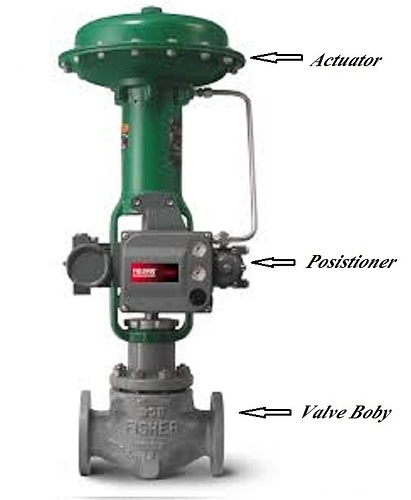Control valves are valves used to control conditions such as flow, pressure, temperature, and liquid level by fully or partially opening or closing in response to signals received from controllers that compare a “setpoint” to a “process variable” whose value is provided by sensors that monitor changes in such conditions.
Control Valve is also termed as the Final Control Element.
A control valve consists of three main parts in which each part exist in several types and designs:
Valve’s actuator - The opening or closing of control valves is usually done automatically by electrical, hydraulic or pneumatic actuators.
Valve’s positioner- Positioners are used to control the opening or closing of the actuator based on electric, or pneumatic signals. These control signals, traditionally based on 3-15psi (0.2-1.0bar), more common now are 4-20mA signals for industry, 0- 10V for HVAC systems, and the introduction of “Smart” systems, HART, Fieldbus Foundation, and Profibus being the more common protocols.
Valve’s body - valve bodies are available to achieve specific flow regulation behavior of process fluids.
